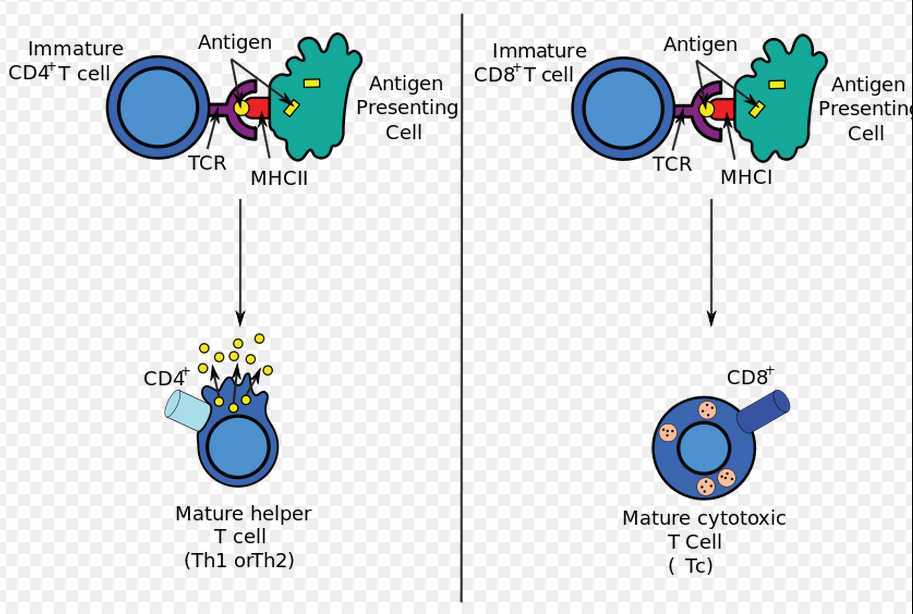标签:des blog http io ar os sp for strong
An antigen-presenting cell (APC) oraccessory cell is a cell that displays foreign antigens complexed with major histocompatibility complexes (MHCs) on their surfaces; this process is known as antigen presentation. T-cells may recognize these complexes using their T-cell receptors (TCRs). These cells processantigens and present them to T-cells.

Antigen presentation stimulates T cells to become either "cytotoxic" CD8+ cells or "helper" CD4+ cells.
APCs fall into two categories: professional or non-professional.
T cells cannot recognize, and therefore cannot respond to, ‘free‘ antigen. T cells can only ‘see‘ an antigen that has been processed and presented by cells via carrier molecules like MHC and CD1 molecules. Most cells in the body can present antigen to CD8+ T cells via MHC class I molecules and, thus, act as "APCs"; however, the term is often limited to specialized cells that can prime T cells (i.e., activate a T cell that has not been exposed to antigen, termed a naive T cell). These cells, in general, express MHC class II as well as MHC class I molecules, and can stimulate CD4+ ("helper") T cells as well as CD8+("cytotoxic") T cells, respectively.
To help distinguish between the two types of APCs, those that express MHC class II molecules are often called professional antigen-presenting cells.
Professional APCs are very efficient at internalizing antigen, either by phagocytosis or by receptor-mediated endocytosis, and then displaying a fragment of the antigen, bound to a class II MHC molecule, on their membrane. The T cell recognizes and interacts with the antigen-class II MHC molecule complex on the membrane of the antigen-presenting cell. An additional co-stimulatory signal is then produced by the antigen-presenting cell, leading to activation of the T cell. The expression of co-stimulatory molecules is a defining feature of professional APCs.
There are three main types of professional antigen-presenting cells:
A non-professional APC does not constitutively express the Major Histocompatibility Complex class II (MHC class II) proteins required for interaction with naive T cells; these are expressed only upon stimulation of the non-professional APC by certain cytokines such asIFN-γ. Non-professional APCs include:
After APCs have phagocytosed pathogens, they usually migrate to the vast networks of lymph vessels and are carried via lymph flow to the draining lymph nodes (this network is collectively known as the Lymphatic system). The lymph nodes become a collection point to which APCs such as dendritic cells (DCs) can interact with T cells. They do this bychemotaxis, which involves interacting with chemokines that are expressed on the surface of cells (e.g., endothelial cells of the high endothelial venules) or have been released as chemical messengers to draw the APCs to the lymph nodes. During the migration, DCs undergo a process of maturation; in essence, they lose most of their ability to further engulf pathogens, and they develop an increased ability to communicate with T cells. Enzymes within the cell digest the swallowed pathogen into smaller pieces containing epitopes, which are then presented to T cells using MHC.
Recent research indicates that only certain epitopes of a pathogen are presented because they are immunodominant, it seems as a function of their binding affinity to the MHC. The stronger binding affinity allows the complex to remain kinetically stable long enough to be recognized by T cells.
标签:des blog http io ar os sp for strong
原文地址:http://www.cnblogs.com/biopy/p/4080214.html